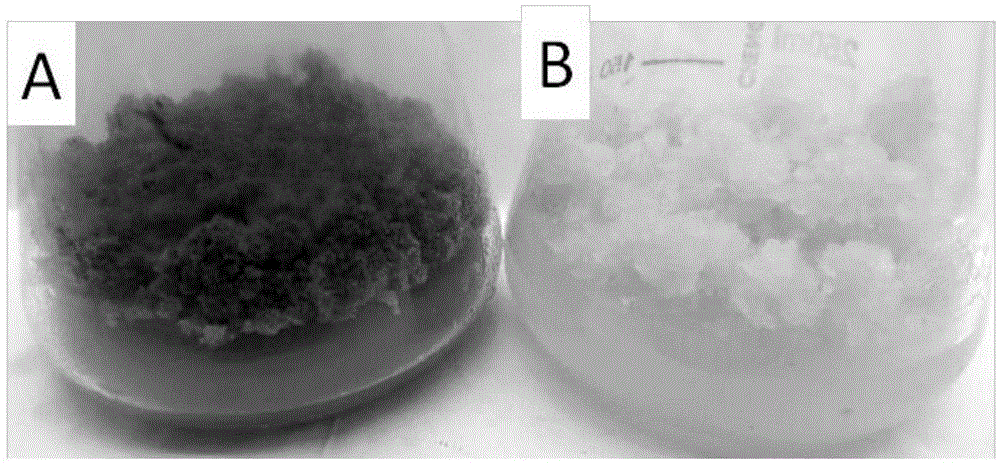Method for inhibiting browning of plant cell tissue in culture
A technology for plant cells and tissues, applied in the field of inhibiting browning of plant cells and tissues during cultivation, can solve the problems of toxic side effects, inability to use on a large scale, and incomplete suppression of browning, etc., to avoid damage, wide application range, prevent browning effect
- Summary
- Abstract
- Description
- Claims
- Application Information
AI Technical Summary
Problems solved by technology
Method used
Image
Examples
Embodiment 1
[0037] Comparative analysis of enzymatic browning-related characteristics between browning cell lines and non-browning cell lines of Taxus chinensis
[0038] (1) There are two cell lines preserved in the laboratory, one is the cell line (NA) which has been subcultured for half a year. The 10-year-old cell line (CA) basically did not have browning phenomenon during the solid subculture process. The two cell lines were inoculated on MS solid medium, sucrose 30g / L, the temperature was controlled at 25°C, and cultured in the dark. NA cells showed dark brown, and the cell growth state was not good, and CA cells showed beige, and the growth was vigorous ( figure 1 ).
[0039] (2) In order to explore the reasons for the differences in the degree of browning between the two cell lines, the flavonoid content and PPO activity of the two cell lines were compared and analyzed. The study found that the maximum difference in the content of flavonoids in the two cell lines was 17 times at...
Embodiment 2
[0040] The browning control of embodiment 2 Chinese yew browning cell lines
[0041] The cell line (NA) of subculture half a year in embodiment 1 is inoculated in the corresponding MS solid subculture medium that contains gibberellin as 10mg / L, 50mg / L and 100mg / L, sucrose 30g / L, temperature control Culture at 25°C in the dark, every 25 days is a subculture cycle, and replace with fresh above-mentioned subculture medium. After two cycles of cultivation, the total flavonoid content in the cells decreased by 41%, 77% and 86% respectively, so that no browning occurred on the culture medium adding 50mg / L and 100mg / L gibberellin. Solid yew callus and yew cell solid cultures.
Embodiment 3
[0043] Induced Browning Control of Cotton Callus
[0044] Cotton callus was induced by MS medium, and the concentration of gibberellin was 50mg / L. Select hypocotyls of sterile cotton seedlings in good growth condition and cut them into small pieces of about 1 cm, and cut their cotyledons into small pieces of about 1 cm×1 cm, and place them on the surface of MS solid medium containing 50 mg / L gibberellin concentration. The culture temperature is 28° C., and the light is 12 hours a day, and the culture is 30 days. Adding 50mg / L gibberellin to MS medium finally reduced the content of total flavonoids in hypocotyls and cotyledons by 58% and 67%, respectively, thus obtaining cotton calli without browning.
PUM
| Property | Measurement | Unit |
|---|---|---|
| Diameter | aaaaa | aaaaa |
| Diameter | aaaaa | aaaaa |
Abstract
Description
Claims
Application Information
 Login to View More
Login to View More - R&D
- Intellectual Property
- Life Sciences
- Materials
- Tech Scout
- Unparalleled Data Quality
- Higher Quality Content
- 60% Fewer Hallucinations
Browse by: Latest US Patents, China's latest patents, Technical Efficacy Thesaurus, Application Domain, Technology Topic, Popular Technical Reports.
© 2025 PatSnap. All rights reserved.Legal|Privacy policy|Modern Slavery Act Transparency Statement|Sitemap|About US| Contact US: help@patsnap.com

